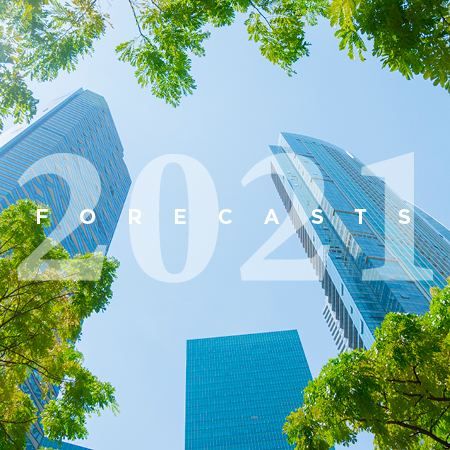The ongoing Covid-19 pandemic continues to disrupt North American commercial real estate markets and investment. Its impact is unprecedented and while challenging times lie ahead, bright spots and opportunities remain.
After peaking at 14.7% in April 2020, US unemployment has been steadily improving and was at 6.9% in October (though progress is slowing as rising coronavirus cases continue to weigh on the recovery).
Office demand remains subdued and sublease additions are pushing availability up across all markets. Dense urban cores (including San Francisco, Chicago and New York) have seen the greatest impact, as well as energy-sector-driven markets including the major Texas cities and Denver. ‘Big tech’ is a bright spot as the likes of Facebook, Amazon, Apple, Netflix, Google and Microsoft continue to expand their presence in key tech hubs including New York, the Bay Area, Seattle and Atlanta – even amid uncertainty.
The industrial sector is another source of optimism. It has been growing steadily since 2013, with huge amounts of new development and strong demand to keep up with the increase in supply. The rise of e-commerce, particularly now, is leading to a rise in demand for warehouse, distribution and last mile delivery space. Leasing volume dipped, as in other sectors, at the onset of the pandemic, but has already seen a quick recovery, posting strong numbers in the third quarter.
With abundant uncertainty and a disconnect between owner and buyer pricing expectations, commercial real estate investment fell at double-digit rates for the eighth consecutive month at the end of the third quarter. Still, there is variation across the property sectors: some remain in the doldrums while for others, investors see a light at the end of the tunnel. Investors will continue to take a cautious approach until the world returns to one that is more reflective of the environment that existed pre-pandemic, and volumes are likely to remain low until such time as a vaccine is widely distributed and companies return to the office in earnest.
2021 North America tips

- Prime logistics/warehouses in both traditional industrial gateway locations (northern New Jersey, Southern California, Dallas-Fort Worth, Midwest) as well as last mile delivery opportunities for major urban markets; Amazon remains the primary target.
- Life sciences and biotech or other similar uses for which alternative workplace strategies such as work-from-anywhere are not applicable, such as Cambridge, San Diego and Maryland/Virginia.
- Prime Grade A office buildings in traditional gateway and emerging innovation cities such as Austin and Nashville, with in-place long-term leases to high-credit tenants; focus on mission critical/strategic locations.

- Multifamily in traditional urban markets as the effects of the pandemic lessen and there is a reversion to the longer-term urbanisation trend, and new multifamily product proximate to innovation cities.
- Prime office in the core of traditional gateway markets with current or near-term vacancy and capital requirements; access to transportation is key.
- Office in tax-friendly locations which will benefit from corporate relocations away from high-tax jurisdictions, such as Dallas/Houston/Austin, Nashville, Orlando/Tampa/Miami.

- Secondary office in traditional gateway markets as well as suburban office product in need of repositioning and lease-up.
- Older multifamily product in need of substantial renovation and in locations where there is or is expected to be positive demographic migration.

- Distressed office and hospitality assets in traditional gateway and key leisure markets, either through note sale purchases, rescue capital injections or coming out of foreclosure proceedings, either real estate or UCC.
- Retail in core urban and suburban markets through a repositioning and re-leasing or an adaptive re-use of properties.
- Development in core markets as a counter-cyclical move with delivery of product in an expected-to-be recovered market.

- Senior and assisted living facilities with an opportunity to enhance the facilities for a post-pandemic environment.
- Bifurcation of assets into fee and leasehold to enhance current cash yields and reduce equity requirements.




